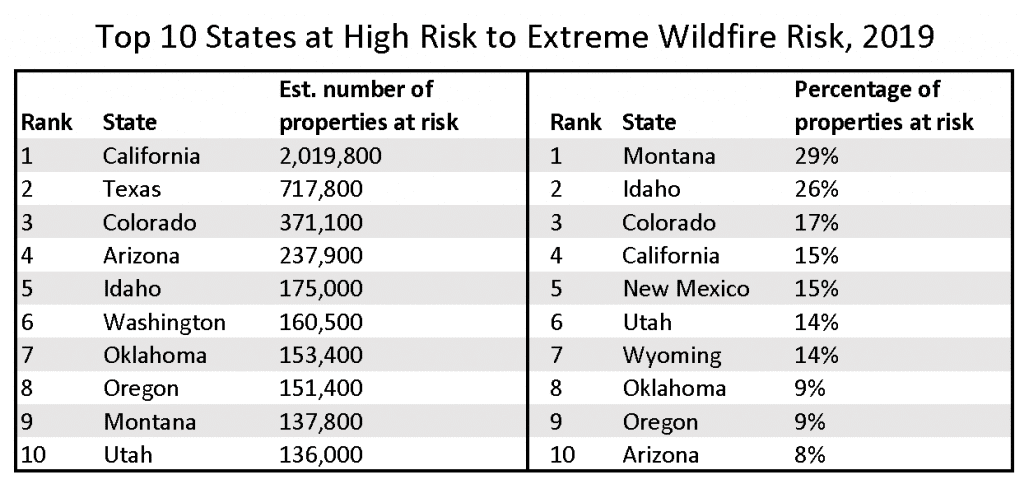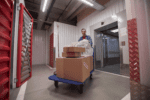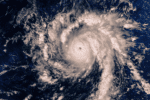Wildfire season is once again upon us with the Western United States anticipating raging fires after a winter of not much rainfall. Further exacerbating the potential for real devastation from the wildfires is the coronavirus, which interrupted the normal firefighting training and forest management that typically take place in the spring. Social distancing also presents real obstacles in quelling a blaze for fear of spreading the virus among firefighters (The Bureau of Land Management (BLM) has released social distance and hygiene tips for firefighters). For these reasons, it is particularly important to take precautionary measures and establish defensible spaces.
In addition, a large wildfire may force evacuations of whole towns, as it did in 2018 in Paradise, California. Tens of thousands took flight from Paradise, with many going to different shelters – a higher risk now that the prevailing wisdom is to limit all contact with other people during the COVID-19 crisis.
Understanding Wildfires Is Critical in Loss Prevention
Understanding how wildfires break out and what to do once they’ve started is essential to preserving human and animal lives, as well as for protecting single-family properties, multi-family residential properties, community associations (HOAs, COAs, PUDs), buildings under construction and vacant buildings – and now it is more critical than ever. Establishing defensible spaces and following simple fire-safe guidelines, according to the Ready, Set, Go! Program1, could have helped save as many as 80% of the homes lost to wildfires.
Top States at Risk of Wildfires
Wildfires are fueled by a build-up of dry vegetation and driven by seasonal hot and dry winds. The top 10 states at risk for wildfires, according to Verisk, are: California, Texas, Colorado, Arizona, Idaho, Washington, Oklahoma, Oregon, Montana, and Utah. California has more than 2 million properties at risk for wildfires while Utah at the lower end of the ranking has 136,000 properties in the line of fire. See the chart below.

The primary driver behind the increasing number of record-breaking wildfires that we are seeing in these areas is due to growing residential development where natural fuels are present. With the right weather conditions and an errant spark, the next unwanted, devastating wildfire is waiting to ignite.
“When development and fuels intermix or where they are adjacent to each other, there is always going to be a threat of destruction to property and consequently loss of life,” according to a 2019 CoreLogic report. The population of the Western United States now tops 100 million, cites the report, with the potential impact of wildfires on humans and humans on wildfires inextricably linked. According to the report, “People are more likely to cause wildfire ignitions by a factor of 4-to-1 as compared to natural causes. While some human-caused ignitions are the result of arson, many are caused by accidental or unintentional ignitions from normal human activity.”
In 2018 alone, 8,767,492 acres were burned, roughly equivalent to the area of 74 of the 75 largest cities in the United States combined, cites the CoreLogic report.
Creating Defensible Space
Properties in what is considered the Wildland-Urban Interface (WUI) – an area of dense vegetation – should provide firefighters with the defensible space they require to help protect the homes therein. Defensible space is the buffer created between the building on the property and the grass, trees, shrubs, or any wildland area that surrounds it. This helps keep the fire away from the structure and reduces the risk from flying embers. Even homes located on the wildland boundary are at risk and should take precautions to mitigate loss.
Defensible space consists of three zones around the structure and involves employing various measures in risk prevention. The following are guidelines provided by the Ready, Set, Go! Program and the National Fire Protection Association (NFPA):
- Immediate – Zone 1: 0-5 Feet Around the Home or to Property Line:
- Use hard surfaces such as concrete or noncombustible rock mulch around the home
- Clean roofs and gutters of dead leaves, debris, and pine needles that could catch embers
- Store firewood and other combustible materials away from the home, garage or attached deck
- Trim back touching or over-hanging branches from the roof to a distance of at least 10 feet
- Replace or repair any loose or missing shingles or roof tiles to prevent ember penetration
- Intermediate – Zone 2: 5-30 Feet Around Home or to Property Line:
- Use non-wood, low-growing herbaceous vegetation
- Create vegetation groups to break up continuous fuels around your home
- Remove ladder fuels to create a separation between low-level vegetation and tree branches to stop the fire from climbing trees
- Space trees to have a minimum of 18 feet between crowns with the distance increasing with the percentage of slope
- Remove leaf and needle debris from the yard
- Keep lawns and wild grass under 4 inches in height
- Move trail/recreational vehicles, storage sheds and other combustible structures out of this zone and into Zone 3
- Extended – Zone 3: 30-200 Feet Around Home or to Property Line:
- Create and maintain a minimum of 10 feet between the top of trees
- Remove ladder fuels to create a separation between low-level vegetation and tree branches to stop the fire from climbing trees
- Remove dead trees and shrubs
In our next blog, we will be providing measures your insureds can implement to help safeguard their properties, including those under construction, from wildfire destruction.
Sources: 1International Association of Fire Chiefs’ RSG! Program, USDA Forest Service, U.S. Department of Interior, U.S. Fire Administration; Verisk, CoreLogic; NFPA





